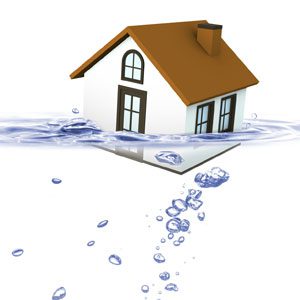A sump pump is your home’s first line of defense against floods. Though the initial installation can be a little pricey and involved, the amount of protection it can provide to your home and your personal property makes the cost well worth it. Having a sump pump is one time where being left “high and dry” is a good thing!
If you have a sump pump that is more than five years old, you should check it to be sure it is working properly. The float and activation switch for the sump may need to be replaced more frequently than the pump itself. The sump, the switch, and the float should be inspected yearly.
Signs it may be time to replace your sump pump
A pump is a simple machine – there are few mechanical elements that can go wrong.
- Is the sump pump noisy? Noise can indicate worn or damaged parts. Pumps that have sucked up hard debris can leave impellers bent or damaged. The impellers work like propellers, except they draw things in instead of propelling something along. Impellers are balanced to minimize wear on the shaft on which they spin. A bent impeller causes the pump to wobble and create stress on the shaft, creating noise and leading to further damage.
- Is the pump getting power? If the pump is receiving power, but is not working, there may be an electrical problem inside the unit. Electrical problems should always be worked on by a professional. You may need to replace the pump and the first thing to do is to call your HVAC specialist.
- Has the sump pump stopped working entirely? If the unit isn’t getting power, check the plug and the breaker box to be sure the breaker wasn’t tripped. Then check the float switch with an electrical tester. If the float switch is getting power, then the motor is burned out and the pump must be replaced.
Proper maintenance is the key to avoiding failure just when you need the sump pump the most. Here are the most common causes of sump pump failure:
- Power Failure – If you have an electrical power outage, your sump pump won’t work. To prevent this, have a backup generator that is activated in the event of a power failure.
- Incorrectly-Sized Sump Pump – If the pump is not the right size for your home – whether too large or too small, it may fail. When a sump pump is too big, it is forced to work harder, resulting in a shorter product lifespan. If too small, it may not be able to adequately pump out the water.
- Improper Sump Pump Installation – The manufacturers’ instructions for installation are specific and must be followed carefully. If a check valve is recommended or required to be installed on the discharge line, it needs to be done correctly. If not, the back-flow of water can cause the pump impeller to rotate backwards and unscrew from the motor shaft. If this occurs, the pump motor will run, but it will not pump out water. In addition, the manufacturer may require a small air relief hole in the discharge line and it is imperative that the sump pump pit be located in an area free of dirt or gravel to avoid debris entering into the pump.
- Switch Problems – Problems occur when the pump shifts from its position inside the basin, rendering the float ineffective. The float is responsible for the smooth operation of the on/off switch. The sump pump relies on the switch and the float arm mechanisms to operate efficiently.
- Lack of Regular Maintenance – Some manufacturers recommend that the sump pump run every 2 – 3 months and if there is a back-up pump that it be run also to make sure it is working properly. Other recommendations include, checking that the pump is discharging water; checking the operation of the float; cleaning out the air hole in the discharge line; and replacing the battery on the back-up sump every 2 to three 3 years.
- Frozen or Clogged Discharge Lines – If water cannot exit the home through the discharge line, the system will not work. Homeowners must keep the discharge pipe protected from freezing and free of sticks, dirt, rocks, and other debris. A special grated discharge line attachment can help keep the line free of debris and protected.
- Product Defect – Although rare, the sump pump may be defective, so it is important to test the pump when it is initially installed to make sure it is working properly.
Here are some maintenance tips that you can do at least once a year – quarterly is better!
- Run a vinegar solution through the sump pump in order to clean it
- Make sure the sump pump’s float switch is not restricted in any way.
- Clean all vents and air holes for maximum effectiveness
- Protect the discharge line from debris and freezing
If your sump pump needs replacing or if you have questions about replacing your sump pump or maintaining it to operate properly and efficiently, call the HVAC professionals at Nashoba Air & BoilerWorks at (978) 540-8676 or email us at [email protected]. Our staff Master Plumbers and Master Electricians are here for you!

